Standard sizes for one-and-a-half duvet and duvet cover

In an effort to ensure a peaceful and healthy sleep for themselves and their whole family, many housewives think about choosing a suitable blanket. One of the most popular varieties is the one-and-a-half blanket, which is sometimes chosen not only for single beds, but also for double beds.


Standard sizes
They began to call the half-sleeping blanket that way not because one and a half people can hide under it. So they began to call it, because the average width of this blanket is one and a half meters. It is also called family, because it is suitable for a family bedding set with two one-and-a-half duvet covers. This option will appeal to a couple who experience some discomfort while sleeping under one large blanket.
A separate one-and-a-half blanket for each spouse will allow you not to wake up from the cold at night and settle down to sleep as comfortably as possible, without interfering with each other.
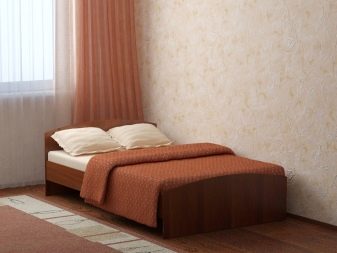

It would seem that from the name one can understand what the dimensions of the "lorry" are. However, today there is some classification of one-and-a-half bedding:
- Euro-sized sleep items are the most common and are considered a kind of standard among the "lorry". The dimensions of such products are 155x215 cm. For this type of blanket, the easiest way is to choose a set of bed linen.
- During the Soviet era, bedding had its own standards. For one-and-a-half blankets, dimensions of 140x205 cm were adopted. Today, production by such standards takes place, such dimensions will come in handy for narrow berths so that the blanket does not hang on the floor.
- Models with parameters 160x205 cm are not so common on sale. Typically, this modification is chosen as a children's option.
- Non-standard sizes of bedding can have dimensions of 160x215 cm or 160x220 cm. Models with such parameters are quite rare to come across, and bed linen for such a blanket is not easy to find. Non-standard parameters will appeal to people of tall stature, since models of regular sizes are not able to cover a tall person completely.

Materials (edit)
Lorries, like other types of blankets, differ in their composition. Based on individual characteristics and personal preferences, each person can choose the filler that suits him. All existing fillers can be roughly divided into natural materials and synthetic fillers.
Natural
Natural fillers include:
- Wool - the most common material for making blankets. For the production of products in this category, camel and sheep wool, as well as undercoat or down of llama, merino and cashmere mountain goats, are used. The pluses of woolen bedding include the ability to retain heat well and absorb excess moisture. All extraneous odors quickly disappear from woolen blankets, products are relatively light in weight and serve their owners for a long time with proper care. The disadvantages of wool products include the fact that they can be attacked by moths or dust mites.
The camel blanket is considered one of the warmest, and merino and sheep wool, in addition to thermal properties, also has medicinal


- Blankets with down filling are considered the warmest.For stuffing down models use feathers and down of ducks and geese, sometimes the down of a loon. Although products with down filling are quite voluminous, they have practically no weight and are good at letting air through them. However, with excessive humidity, down comforters can quickly damp down and require professional help to properly care for them.
In addition, down products should not be chosen by people prone to allergies, as they can get dust mites.

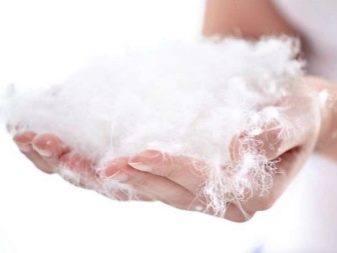
- Silk blankets can be classified as premium products. The filler of such models is made from silkworm cocoons, which are processed using a special technology. Due to this feature, specimens with silk padding are not susceptible to attack by ticks and other parasites. The amount of filler used determines whether this or that model is a winter or summer option.
Products with such a filler allow air to pass through well and maintain a comfortable temperature; they are suitable for allergy sufferers and will last a long time. However, caring for them is not easy.


- Bamboo fibers began to be used in textile production not so long ago, but many people have already fallen in love with products made from them. Bamboo blankets are highly eco-friendly and very soft, they are highly breathable and absorb moisture. They do not cause allergies and even have antibacterial properties. The disadvantages of bamboo models include their high cost and short service life, and they will not heat so much.
- Lyocell or eucalyptus cellulose blankets are distinguished by their strength, softness and lightness. Like many other natural fibers, eucalyptus has preventive properties and does not cause allergies. Models with eucalyptus filler help not to freeze in winter and not sweat in summer, however, you will have to pay a considerable sum for comfort.


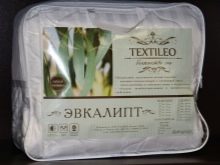
Artificial
Modern technologies make it possible to produce high-quality blankets from artificial fibers that do an excellent job of their function.
The price for them is more affordable than for products made from natural fibers, they do not cause allergies and are not picky about care. Many artificial fillers are made from polyester fiber and therefore have common properties:
- Padding blanket is the most budgetary option, therefore its quality is not up to par: during operation, it can lose its shape and volume.
- Polyester it is distinguished by its softness and pleasant tactile sensations, and its characteristics make the fabric similar to wool.
- Holofiber is a great option for making blankets. The special structure of fibers in the form of springs gives this material airiness and lightness. It is also called artificial fluff.


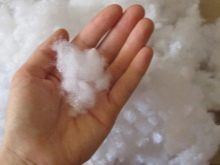
- The best synthetic material for sewing blankets is considered thinsulate... In terms of properties, such products are comparable to downy ones, but the service life and ease of care make Thinsulate a favorite. The price for models with this material is above average.
- Silicone Blankets do not absorb odors and remove moisture well. The soft and weightless structure will appeal to many, and the ease of care and durability attract buyers for a relatively low price.


We select a duvet cover for a one-and-a-half blanket
So that when using a one-and-a-half blanket tucked into a duvet cover, there are no difficulties, you need to choose the correct size bedding. A duvet cover should be chosen with a small margin. It is enough that in the tucked form there remains 5 cm in length and width of free space. This will allow you to avoid knocking down the blanket on one side in the future, and will also facilitate the process of changing bed linen.
It should also be borne in mind that most duvet covers can shrink after washing. When buying high quality bedding, you don't have to worry about it.
Usually, the manufacturer uses a non-shrinking fabric or immediately takes into account the allowance when sewing, by which the size of the duvet cover will decrease. If in doubt about the impeccable quality and conscientiousness of the manufacturer, you should take a set with a duvet cover 5 or 10 cm wider than the duvet. It is this value that is taken into account, since the share thread in fabrics for bedding is located in width.
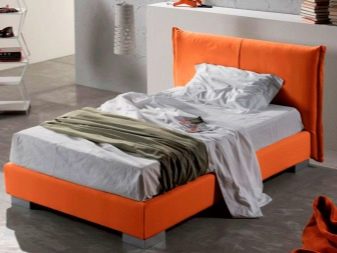

Selection Tips
The modern bedding market offers a wide range of sleep accessories. First of all, people choose exactly what is convenient for them.
Here are some tips to help you decide on a purchase:
- When choosing combined models in which natural fluff is combined with artificial fibers, you should give preference to items with a percentage of natural filler of 40 or more.
- When buying a duvet with a down or silicone filling, you need to pay attention to the quality of the tailoring. A product that is stitched with squares or small cassettes will be of better quality, and the filler in it will be less confused.
- Quilts-clusters, in which the pockets for the filler are arranged in a checkerboard pattern, will appeal to especially fastidious people. By shaking such a blanket, you can concentrate the filler in one place and insulate a separate part of the body, for example, legs.
- Products with a homogeneous filling in the form of natural or synthetic fibers are processed using a quilting machine. A quilt with squares will be cheaper than hand-embroidered fancy designs.


- In pursuit of a low price, textile manufacturers add synthetics to eucalyptus products. If this fact takes place, then the ratio of synthetics and natural fibers should be 50/50.
- A practical option for any time of the year is a flip blanket. On the one hand, such models have fabric upholstery, and the other side is warmer and made of wool or even fur. It is convenient if the two parts are connected to each other with buttons or a zipper and can be used separately from each other.
- Before buying, you should decide what degree of warmth you need a blanket. Usually, the manufacturer indicates this information on the label, where 5 is a very warm blanket, and 1 is a year old version with a minimum amount of filler.
- The fabric for sewing the cover plays an important role. The best indicators of strength and pleasantness of tactile contact are possessed by natural cotton materials, satin or teak covers. Luxury models can have a silk cover. When using synthetic fillers, some manufacturers use polyester, which can be additionally treated with an impregnation from dirt and bacteria.
You will learn more about the standard sizes of one-and-a-half quilts and duvet covers in the following video.













The comment was sent successfully.